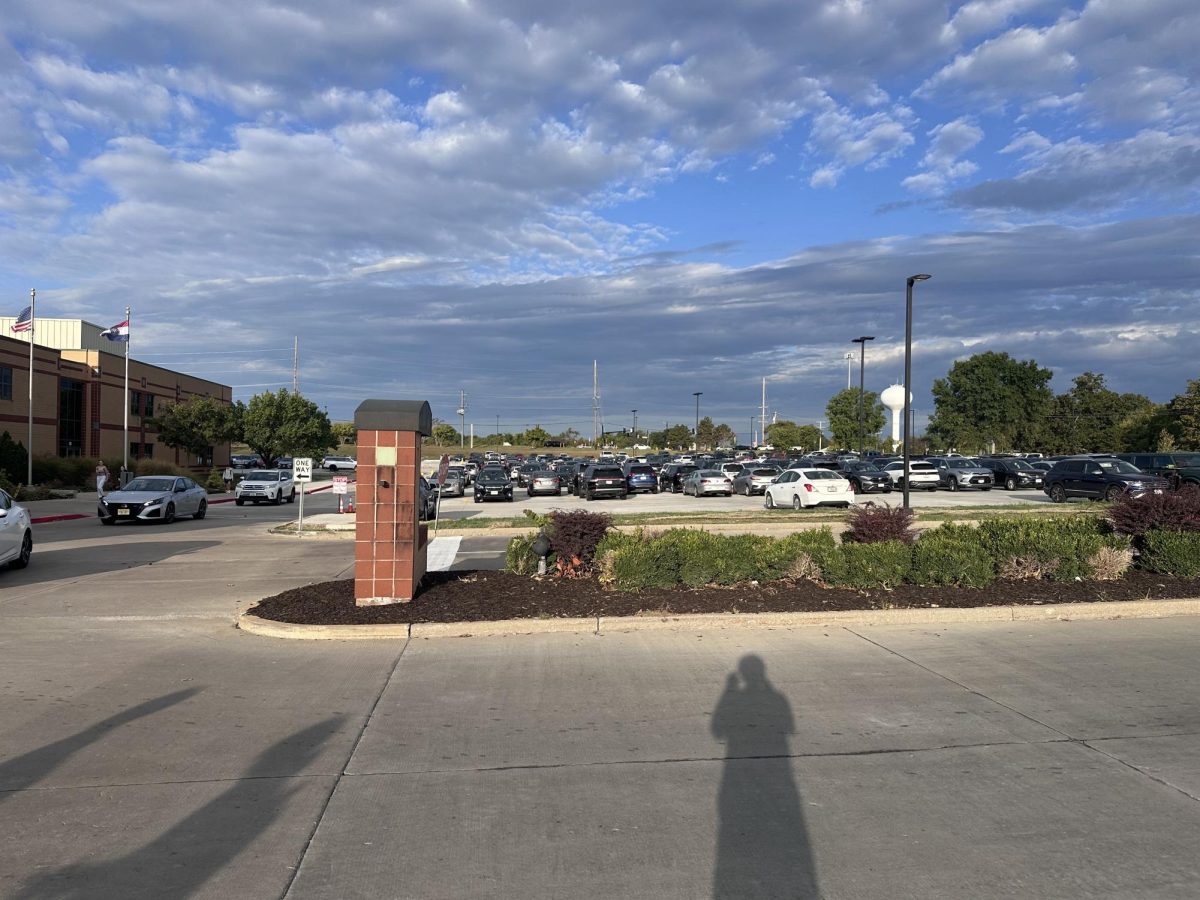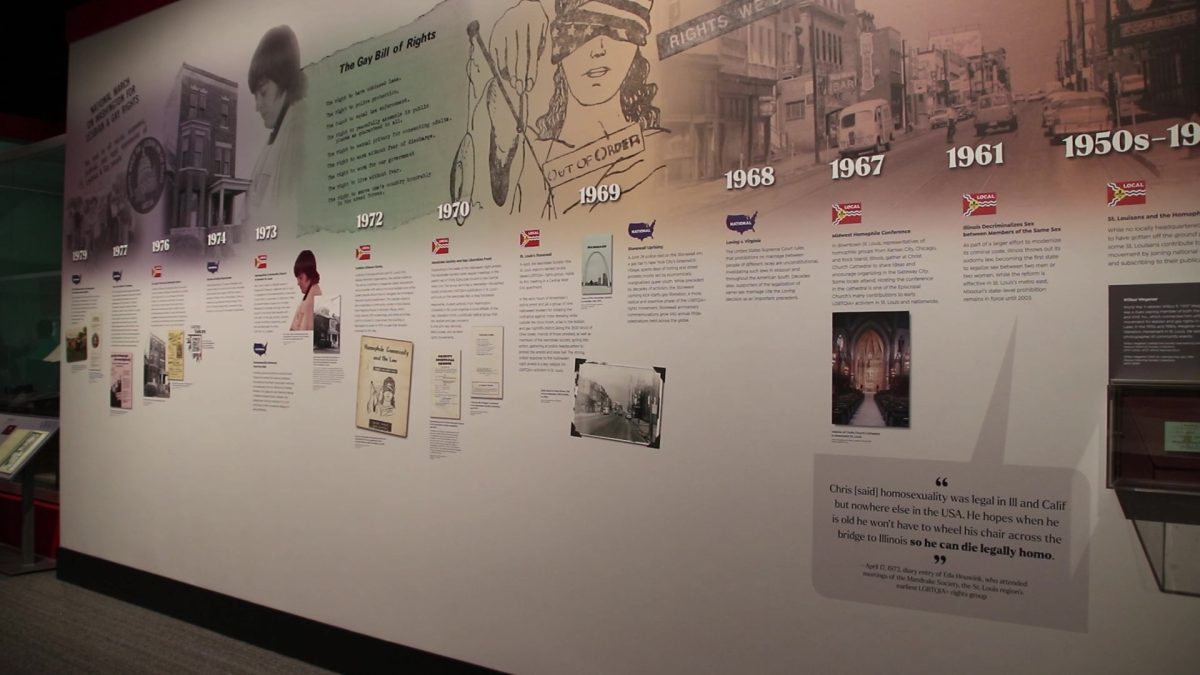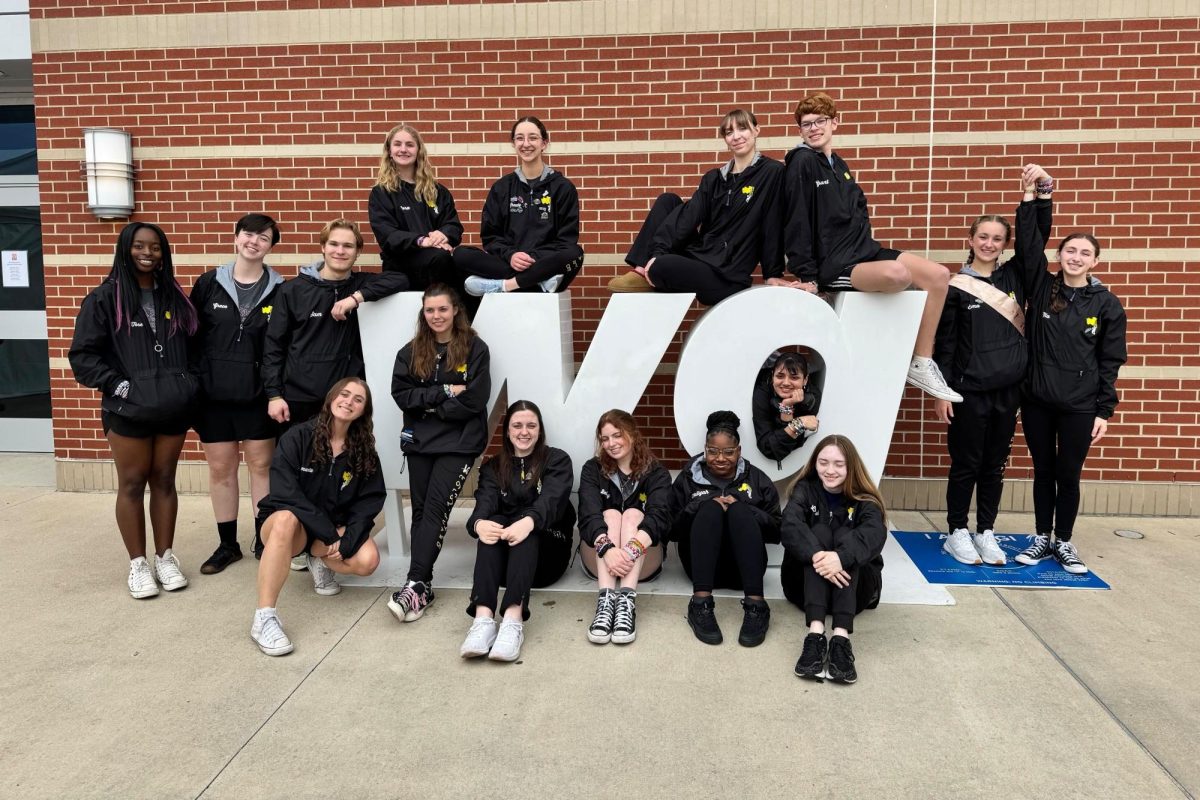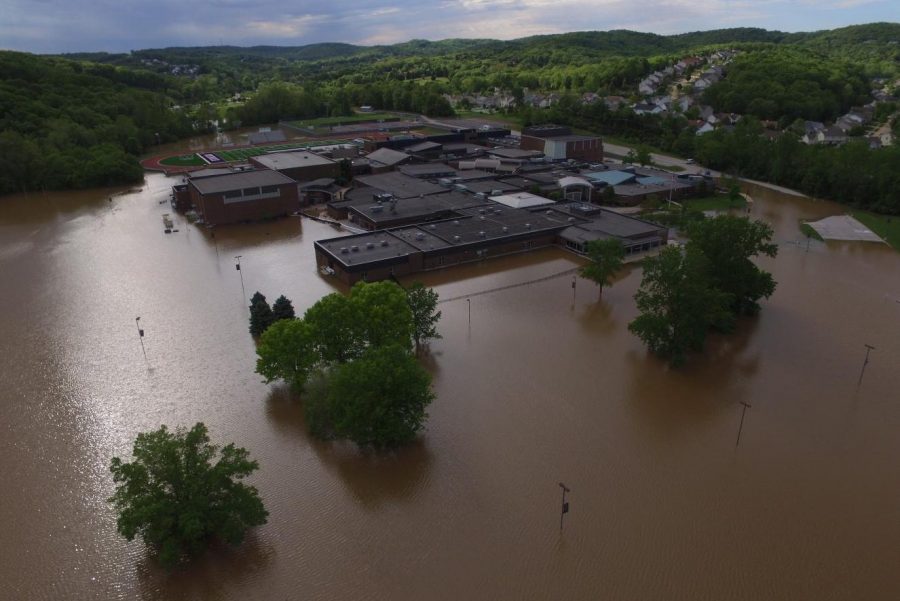OPINION: An environmental case supporting merger
In 2017, floodwaters from the rising Meramec River blocked off Eureka High School from Highway 109.
April 30, 2019
Katie Barefield is a junior at Lafayette and a member of the Missouri Coalition for the Environment, Civitas and Model UN. She is also planning to start a gardening club. She chose to submit this piece as a guest column for The Lancer Feed.
The infamous “flood week.” Lafayette students pray for those days off and almost expect it as if it’s another spring break. Juniors and seniors may remember when we got about a week off of school in 2017 because Highway 109 was underwater. We were excited because we didn’t have school and most of us weren’t even affected by the flood water.
Although we were fine and, in fact, happy we got a week off of school, other St. Louis and even Missouri citizens weren’t so lucky. The Meramec River flooded so badly that sections of Interstate 44 were completely submerged. The flood of 2017 resulted in $6 billion in damages and five deaths. Pictures of flooded streets and homes emerged but were not really paid attention to—why would they be? Floods in St. Louis are as common as the seasons and bread-sliced bagels. In fact, two years prior to the 2017 floods was the flood of 2015. And of course, we can’t forget about the Great Flood of 1993 that brutalized the Midwest. That flood resulted in $15 billion of damage, 50 people dead, hundreds of failed levees and thousands evacuating—and that’s just the impact on humans.
It seems counterproductive to complain about a naturally occurring event, especially when considering the ecological benefits that floods provide to an ecosystem. Any student taking Environmental Science should be able to tell you that floods are the Earth’s way of replenishing its aquifers and providing more water for the area. It feels unnecessary to say, but I obviously don’t have a vendetta against floods.
The problem is that these floods have been exacerbated by St. Louis’s ill-planned infrastructure. St. Louis County is special in that we have A LOT of municipalities—91, to be exact—which each have their own police stations and taxes. On top of that, we also have 114 counties, each with their own laws as well. That means each county and each municipality is largely only reliable to itself, and regarding flooding, they aren’t responsible for the way the flood is handled. Here at Lafayette, most students likely live in either Wildwood or Chesterfield in St. Louis County. Just across the Missouri River lies St. Charles County, and even though both counties benefit and are hurt by the same river, our laws are not connected. In fact, the infamous Flood of 1993 covered Highway 64—the highway that both counties commonly use.
I assume everyone at Lafayette is familiar with the Valley, the place in Chesterfield where billions of dollars worth of stores and restaurants are located. Yet I also assume everyone is less familiar with the fact that the Valley is located on a floodplain. What that means is that whenever the Missouri River floods, as it commonly does, and those levees break, as they can, there is very little grass and ground to absorb the water, thus exacerbating the flood and allowing for more homes and businesses to be destroyed by the water.
Not to mention, when the water flows across the street and parking lots, it picks up all the gasoline spills and trash left by companies and people in the area and leads to non-point pollution, which greatly harms our water supply. To make things worse, after talking with Ed Smith from the Missouri Coalition for the Environment, it was determined that since the North was hit with a “snow bomb”, if the ground isn’t thawed in time to collect the water, St. Louis may be hit with a flood almost as bad as the one of 1993.
Now that you may feel a more personal connection to the problem at hand, here’s how we may be able to fix it.
Better Together St. Louis’s new merger proposition has been a communal debate in both our city and county for a while now. For those not familiar, simply put, the program would unify the city and the county and hold each other and their municipalities more accountable to each other. So a possibility on the table is to have municipalities such as Chesterfield regulate their development on the Valley’s floodplains better than they have been. Chesterfield isn’t a big fan of this, as it would halt developments on their most economically prosperous location, which they clearly take a lot of pride in, considering they give tax breaks to companies that move in.
However, wouldn’t it be better for those companies if they were located in an area that didn’t flood regularly? Not to mention, before European settlers came to our state, Missouri lost roughly 90% of all its wetlands from marshes along the Mississippi to sinkhole ponds. Luckily, organizations such as the Missouri Department of Natural Resources promoted and passed legislation to help bring back and preserve our wetlands.
Even so, when communities like Chesterfield continue to build on floodplains and other municipalities don’t regulate what is being made around their rivers, it counteracts all the good other communities are doing.
That is why we need to unite the counties and municipalities throughout the state to bring the beauty of our wetlands back to Missouri. Whether it’s through a merger or a joint agreement on better regulations on developing on our wetlands and floodplains, it’s time to defend our natural environment. We owe it to our beautiful Missouri.
If you would like to submit a guest column, feel free to contact our Opinions Editor or email us at [email protected].



































